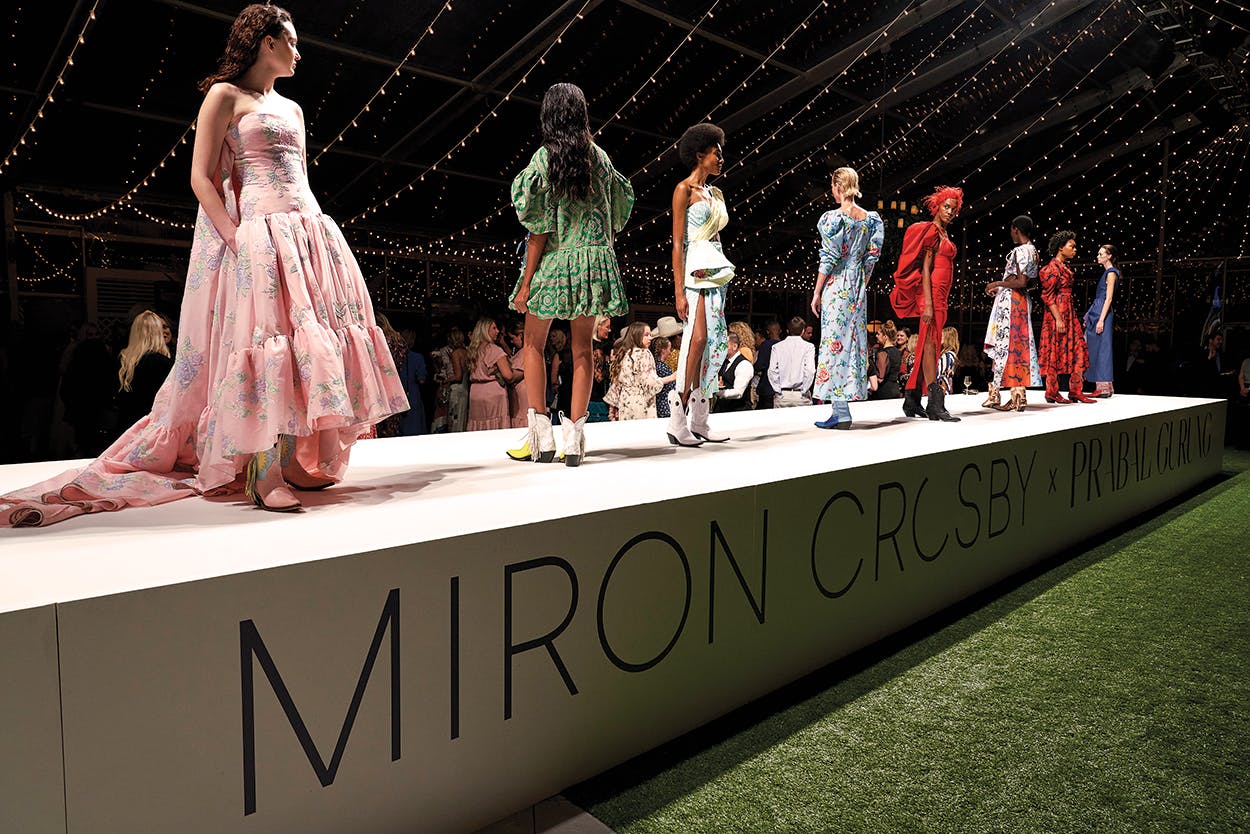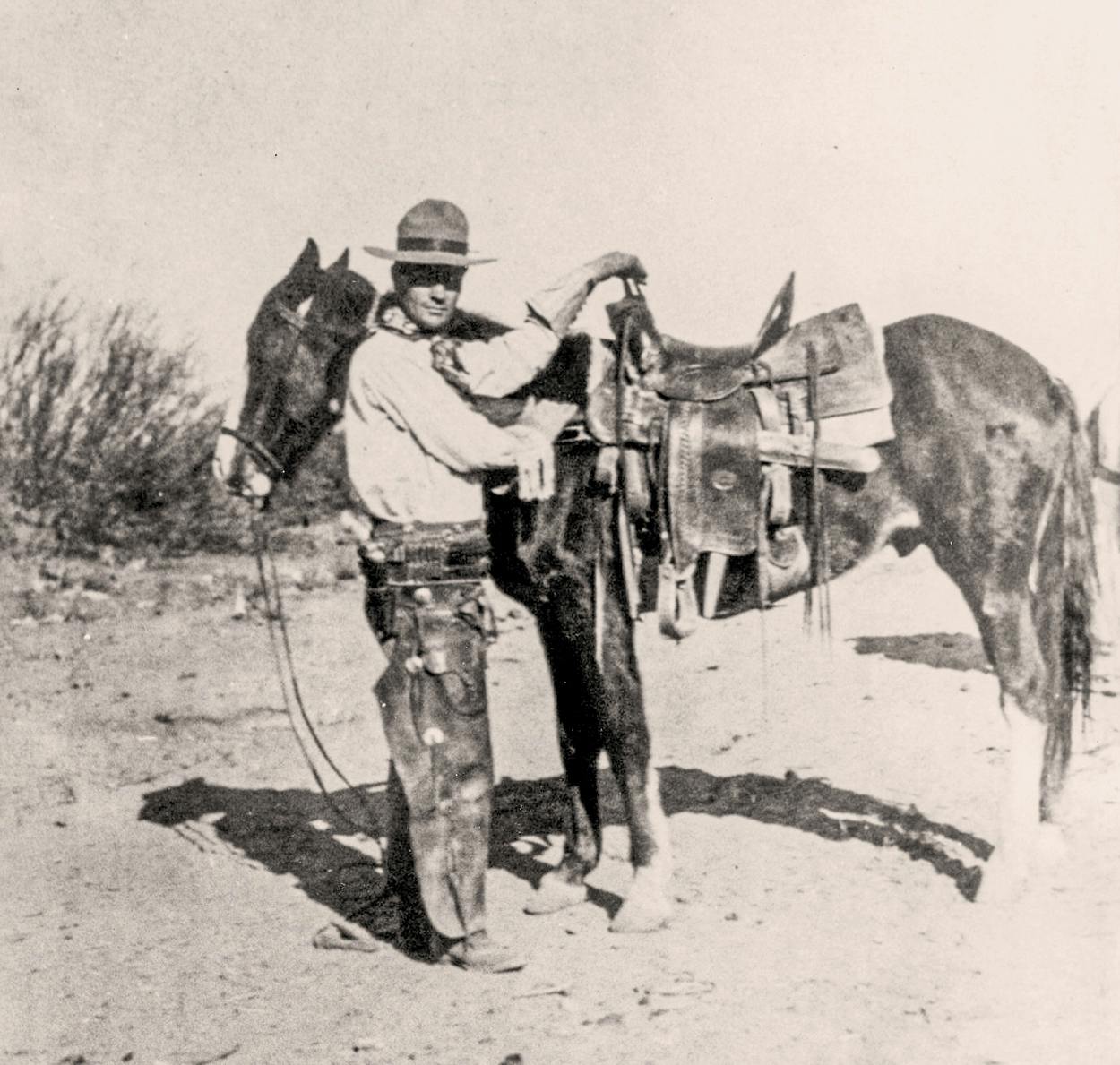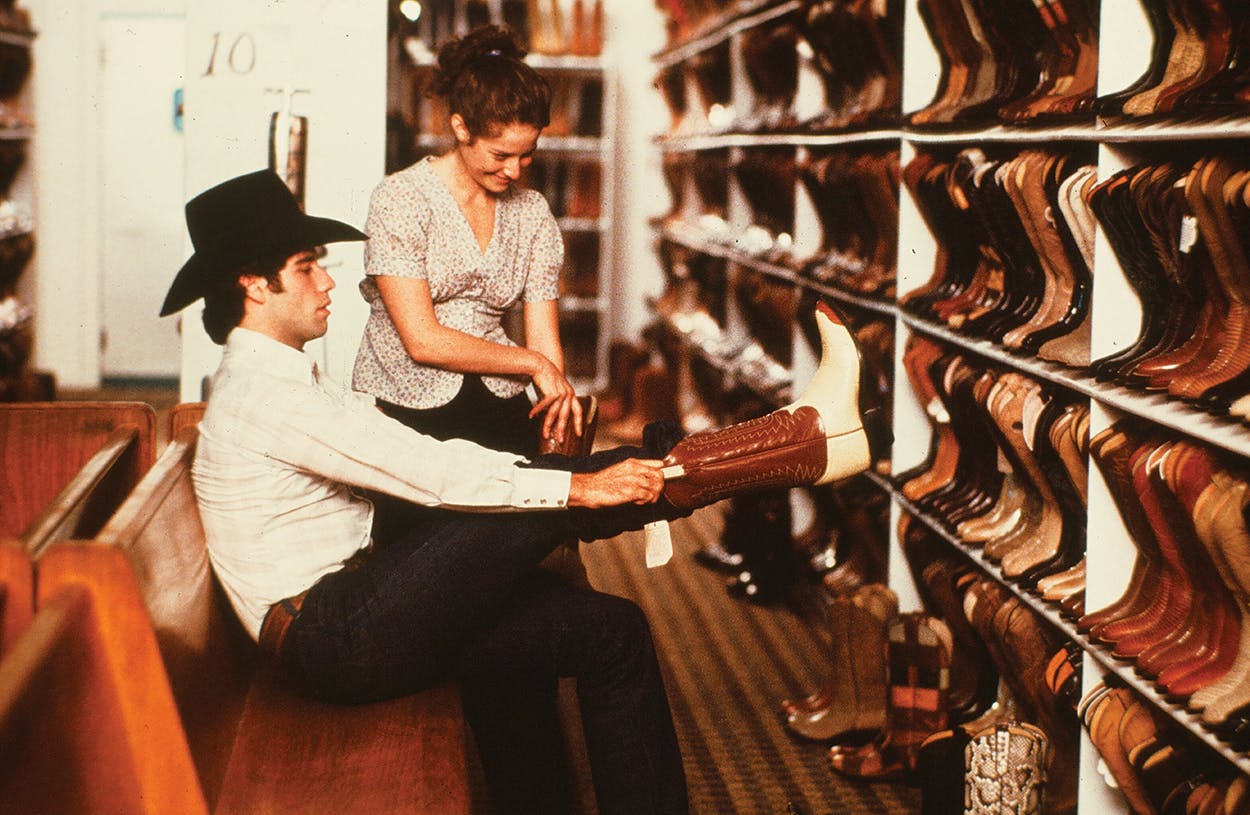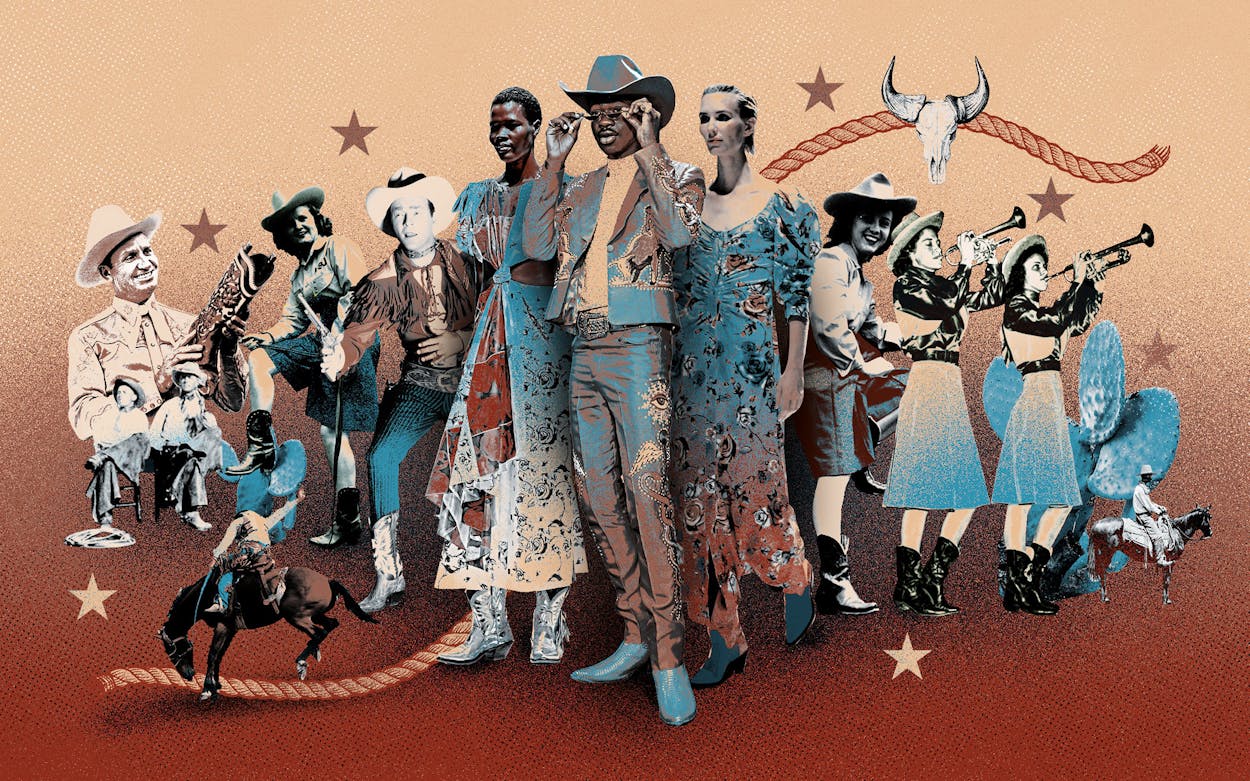When the Nepalese American fashion designer Prabal Gurung wanted to make a statement about American identity and inclusiveness at his New York Fashion Week show in September, he partnered with Dallas-based bootmaker Miron Crosby to create a line of cowboy boots in such materials as mirrored rose-gold leather and paraded them down the runway on an ethnically diverse cast of models. This came about three weeks after “Old Town Road,” by the cowboy boot–wearing hip-hop artist Lil Nas X, finished its record-setting nineteen weeks atop the Billboard singles chart and became the unofficial anthem of the so-called yeehaw agenda, a pop culture movement that highlights the history and aesthetics of the black cowboy.
Cowboy boots are, as they say, having a moment. There are boot start-ups, like the Austin-based brand Tecovas, whose Dallas-raised founder, Paul Hedrick, moved back to Texas from the Northeast to apply one of the hottest business models of the past decade, direct-to-consumer e-commerce, to the staid old boot trade. A small procession of Tecovas imitators has now, inevitably, popped up in its wake. Tecovas itself has begun opening brick-and-mortar stores around the state. For established boot purveyors, times are also good: Cavender’s, the biggest boot seller in Texas, plans to open three to six stores per year for the foreseeable future. Overall, the Western boot market is expected to grow a whopping 50 percent by 2025, to nearly $2 billion in annual U.S. sales.
In Texas, of course, we need no reminder of the powerful appeal of the cowboy boot. It is as much a part of our heritage as horses, cattle, and, well, cowboys and cowgirls. The recent emergence of the boot in high-profile and hip new places, however, is a reminder that boots are the province of more than just Marlboro Man types. While the cowboy boot as we know it today likely wouldn’t exist without the influence of Texans, the style has no single creator or birthplace that can legitimately lay claim to its “invention.” The cowboy boot has always been a cultural amalgam.

For utilitarian reasons, horsemen from time immemorial have favored sturdy, high-shafted foot coverings. Genghis Khan and his marauding Mongol army wore leather boots, and so did medieval Moors, Hungarian hussars, and the vaqueros of old and new Spain. Eighteenth-century German soldiers wore smart-looking calfskin Hessian boots with tassels and a V-cut scallop at the front top of the shaft. Arthur Wellesley, the first Duke of Wellington, did away with the foppish decoration and popularized his namesake Wellington boot. Wellies, in the feedlot and grocery lot, endure still.
What we know today as the cowboy boot is a distinctive offshoot of all those styles and cultures. It arose at the zenith of the great cattle drives—between 1866 and 1890—when cowboys started asking cobblers for boots with a slimmer design, higher heels, more rounded toes, and a sturdier instep than were available at the time. Higher heels, often slightly underslung, stayed in the stirrup better. Rounded toes were roomier. And sturdier insteps made for an altogether sturdier boot. A bootmaker in Coffeyville, Kansas, near the terminus of the Chisholm Trail, began supplying Texas cowboys with such boots in the 1870s. Interestingly, as many as a quarter of working cowboys during this period were black, most of them former slaves. And Richard King had his “kineños,” families of vaqueros he’d recruited from Mexico, working the herds of his sprawling South Texas ranching empire.

Meanwhile, H. J. “Big Daddy Joe” Justin, who hung his shingle in 1879 in Spanish Fort, in Montague County, right on the Chisholm, and Sam Lucchese, who founded Lucchese in San Antonio, in 1883, were shoeing Texas cowboys too. Over the ensuing decades, notable bootmaking outfits emerged all across the state: Tony Lama Boots, founded in El Paso, in 1911; Little’s Boot Company, founded in San Antonio, in 1915; M. L. Leddy’s, founded in Brady, in 1922; the Nocona Boot Company, established in Nocona by Big Daddy Joe’s daughter Enid Justin in 1925.
And though the cattle trailing game faded away with the advent of barbed-wire fencing, the expansion of railroad routes, and changing economics in the beef trade, the romantic—and whitewashed—image of the Wild West cowpoke took hold in countless books, movies, and radio shows. Between the late thirties and late sixties, Hollywood’s most popular genre was the western. The likes of Gene Autry and Roy Rogers became the faces of the tradition.
Riding that wave of popularity, cowboy boots became fashionable among non-cowboys. And fancier than they had ever been before, with elaborate stitching, brighter colors, and ever more intricate inlays and overlays. Where a lone star had once sufficed to decorate the shaft of a boot, there were now multiple stars, as well as images of cacti, six-guns, lightning bolts, and so on. The first big moment of cowboy boots on fashion runways came during the “Texas chic” movement of the eighties, when Dallas ruled the TV screen and Urban Cowboy ruled the box office.

Texas has changed profoundly, in almost every imaginable way, since the days of the great cattle drives. Our population has grown to more than forty times its size back then, and nearly 90 percent of us live in giant and diverse cities, not on the range. But one thing that hasn’t changed all that much over this span is the overall essence of the cowboy boot, even as successive generations of bootmakers have continued to refine its form and turn it into a canvas for their art. The footwear that played an integral part in the creation of Texas—the actual one as well as the mythical one—remains, all these years later, a part of the colorful tapestry of Texas. If cowboy boots are the state’s official footwear (as the Texas Lege itself officially named them, in 2007), then they belong to all Texans. Despite the name, they know no specific gender and belong to no specific trade or class or ethnicity. Cowboy boots are ours.
This article originally appeared in the December 2019 issue of Texas Monthly with the headline “The State of the Boot.” Subscribe today.
- More About:
- Style & Design
- Fashion
- Cowboy Boots









